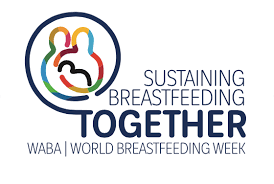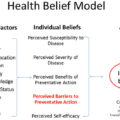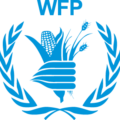What is a contextual project?
The contextual project can be defined as academic work designed to engage students in a manner that enables them to apply what has been learned to a context related to their lives, communities, workplaces, or the wider world. It allows students and participants to construct meaning based on their own experiences.
Examples of contextual projects
- The contextual project can range in length from a single class period to a semester-long exploration
- Contextual projects may form part of the requirements for completing a course.
- Contextual projects can simply be an after-school or summer program.
- Contextual projects may also be work-based learning programs or regular classroom events.
Click Here to Read: Concepts, Theories, and Components of Environmental Health
Steps in Writing a Contextual Project Texila Style
Step 1: Identify the 10 Concepts or Theories
The first step in writing a contextual project is the identification of the concepts and theories involved, this is usually 10 in number and could be more depending on the school. One mistake you must avoid is, choosing less significant concepts over major concepts and theories.
Step 2: Define Each of the Concepts or Theories selected
Here you define the concepts and theories you have chosen and briefly elaborate on how they are applied using diagrams, pictures, and illustrations where necessary to drive home your point.
Step 3: Discuss the significance of the concept and theories
In discussing the significance of your concepts and theories, picture the application of the theories in the personal, communal, or workplace context.
Step 4: Identify and Quote Current Research Activities Related To Each of the Concepts or Theories
As a rule, it is always advisable to choose major concepts and theories so as to avoid scarcity of literature. The standard practice is to avoid quoting studies that are more than 10 years old except where there are no current studies related to the issue being treated. Each concept or theory must have at least one study related to it.
Step 5: Application of the Concepts or Theories to Your Current Job
Under these subheadings, you are expected to relate how the concepts or theories you have chosen apply to your current job. It is very important to research these properly at the point of picking concepts so as to avoid mix-ups and confusion.
Step 6: Usefulness of the Concept or theories To the World
Under these sections, you are expected to discuss the use or application of the concepts and theories at a global stage, citing events and instances where the concepts and theories have been used to advance the fortunes of humankind and global public health. It is also important to show pictures, diagrams, and illustrations to drive home your points.
Step 7: Reference
It is important to avoid any type of plagiarism as such, there is always the need to reference any material used in the course of the project appropriately. Google scholar citation tool provides several referencing alternatives to choose from depending on the demand of your school.
Click Here to Read: CONCEPTS AND THEORIES IN PUBLIC HEALTH POLICY
Sample Contextual Project
Name of Student: XXXXXX XXXXXX
School and Program: XXXXX XXXXXX
Design a clear table of Content
- Concepts/ Theories in Public Health Nutrition
- Significance of Concepts
- Current Research Activities Related To The Concept/ Theories
- Application of The Concepts In The Current Job
- Usefulness Of The Concept To The Current World
- References
Identification of 10 Concepts/ Theories:
To identify 10 concepts or theories from all subjects you have studied in the current term and write down as to how those theories are applied or could be used in his/her personal life.
To do this search through the modules, lecture notes, media materials, and others to identify the key concepts and theories
1.0 CONCEPTS/ THEORIES IN PUBLIC HEALTH NUTRITION
- PUBLIC HEALTH NUTRITION: Public Health Nutrition (PHN) is an area of concentration emphasizing the application of food and nutrition knowledge, policy, and research to the improvement of the health of populations.
This concept is very important in public health as several studies have established the link between nutrition and disease. At a personal level, knowing a good understanding of this concept will help improve dietary choices and enhance personal and family health.
- NUTRITIONAL EPIDEMIOLOGY
Nutritional epidemiology is a relatively new field of medical research that studies the relationship between nutrition and health. Diet and physical activity are difficult to measure accurately, which may partly explain why nutrition has received less attention than other risk factors for disease in epidemiology.
Studying the relationship between diet and health is important because it will provide critical information for public enlightenment, especially in cases of non-infectious diseases relating to food and nutrition. For example obesity, cardiovascular diseases, etc.
- THEORY OF PLANNED BEHAVIOR: THE INFANT FEEDING SERIES (TIFS)
The theory of planned behavior (abbreviated TPB) is a theory that links beliefs and behavior. The concept was proposed by Icek Ajzen to improve the predictive power of the theory of reasoned action by including perceived behavioral control.
The Infant Feeding Series TIFS curriculum is based on the Theory of Planned Behavior (TPB). The newly designed curriculum promotes the appropriate transition to solids through parenting education and behavior change among low-income mothers.
When effectively implemented, it can significantly increase the knowledge of mothers about appropriate infant feeding, proper identification of developmental indicators of infants’ readiness for solid and improved child health
- SOCIAL COGNITIVE THEORY (SCT)
Social Cognitive Theory Holds that portions of an individual’s knowledge acquisition can be directly related to observing others within the context of social interactions, experiences, and outside media influences. It deals with the interactions between people and environments and how it determines behavior. The Social Cognitive Theory (SCT) is a widely used model for developing elementary nutrition education programs. [4]
Social Cognitive theory can be used for health promotion and disease prevention programs. eg it can be deployed to predict obesity prevention behaviors among individuals.
- TRANS-THEORETICAL MODEL (TTM) AND STAGES OF CHANGE
The TTM posits that individuals move through six stages of change: pre-contemplation, contemplation, preparation, action, maintenance, and termination. Termination was not part of the original model and is less often used in the application of stages of change for health-related behaviors. [5]
The Trans theoretical Model provides suggested strategies for public health interventions to address people at various stages of the decision-making process. This can result in interventions that are tailored (i.e., a message or program component has been specifically created for a target population’s level of knowledge and motivation).
6. CONCEPT OF MALNUTRITION
Malnutrition is a health condition that results from eating a diet in which nutrients are either not enough or too much. It has been implicated in half of the global childhood deaths. It may involve calories, protein, carbohydrates, vitamins, or minerals.
Malnutrition has been linked to several forms of health conditions including infectious diseases, such as measles, diarrhea, and pneumonia. This concept can be used in developing information and communication materials in primary health centers, especially in developing countries where malnutrition remains a serious concern.
- CONCEPT OF BREASTFEEDING
Breastfeeding is defined as “an infant’s consumption of human milk, it is a practice that promotes infant health and significantly improves growth and development. The term Exclusive breastfeeding is defined as “an infant’s consumption of human milk with no supplementation of any type except for vitamins, minerals, and medications.
Communicating this concept to mothers and the difference between the various forms of breastfeeding (predominant breastfeeding and exclusive breastfeeding) and the recommendations for breastfeeding by the WHO have been shown to improve maternal and child health. This concept can be used to enhance the breast Feeding Promotion, Protection, and support.
8. CONCEPT OF NUTRITIONAL SURVEILLANCE
Nutrition surveillance is a systematic approach used to detect malnutrition and identify populations at risk of suffering from it. It involves data Collection for Action – For prevention and control’ or ‘Keeping an eye over Nutrition Related Health Problems and factors responsible for it.
This concept can be used to reduce malnutrition and the factors responsible for malnutrition, under-nutrition, and disease/health conditions related to nutrition. Nutritional Surveillance aid long-term planning in health and development and can also provide input for program management and evaluation.
- CONCEPT OF NUTRITIONAL ASSESSMENT
Nutritional assessment Involves the systematic collection of factual data pertaining to the nutritional status of a population within a given location or geographic area.
Nutritional Surveys are used to identify individuals or population groups at risk of becoming malnourished. Identify individuals or population groups who are malnourished. To develop health care programs that meet the community needs which are defined by the assessment.
- CONCEPT OF ECOLOGICAL MODELS
Ecological models were developed to further the understanding of the dynamics in human nutrition. They are used as a model for nutrition research and interventions.
The ecological Model is effective in improving eating and physical activity behaviors. For example, strong evidence from studies with varying designs and generally consistent findings demonstrates that school policies designed to enhance the school food setting leads to improvements in the purchasing behavior of children, resulting in higher dietary quality of the food consumed during the school day.
2.0 SIGNIFICANCE OF CONCEPTS
1. Significance of Public Health Nutrition.
The concept of Public Health Nutrition is very significant because from critical analysis of the concept it is clear from studies that optimum health is a function of good nutrition. Since the health and socio-economic progress of the population are very much interdependent, better public health nutritional status will lead to improved health and higher incomes which promote better health through quality nutrition, better access to safe water and sanitation, and increased ability to purchase more and better quality health care.
- Significance of the Concept Nutritional Epidemiology
Studying the relationship between diet and health is important because it will yield critical information that is necessary for program design, implementation, and evaluation. It is also important for public enlightenment, especially in cases of non-infectious diseases relating to food and nutrition. Example obesity, and cardiovascular diseases. Etc.
- Significance Of the Theory of Planned Behavior
This is a very important theory, especially in Infant Feeding programs. The Infant Feeding Series TIFS is based on this theory. When effectively implemented it can significantly increase the knowledge of mothers about appropriate infant feeding, and proper identification of developmental indicators of infants’ readiness for solid and improved child health.
- Significance Of The Social Cognitive Theory (SCT)
The Social Cognitive Theory (SCT) like other theories in public health nutrition forms the foundation for many health intervention programs. It is a widely used model for developing nutrition programs. Is also useful for the development of health promotion and disease prevention programs such as obesity prevention behaviors among individuals
- Significance Of The Trans theoretical Model
The Trans theoretical Model provides suggested strategies for public health interventions that address challenges in people at various stages of the decision-making process. This can result in interventions that are tailored (i.e., a message or program component has been specifically created for a target population’s level of knowledge and motivation) and effective.
- Significance of the Concept of Malnutrition
Malnutrition is responsible for half of the global childhood deaths, malnutrition has also been linked to several forms of health conditions including infectious diseases, such as measles, diarrhea, and pneumonia. This concept can be used in developing information and communication materials in primary health centers especially in developing countries to promote diet adjustments that incorporate vital nutrients and improve health.
- Significance of the concept of Breastfeeding
There are several health risks associated with formula feeding and early weaning from breastfeeding communicating this concept to mothers and the difference between the various forms of breastfeeding (predominant breastfeeding and exclusive breastfeeding) and the recommendations for breastfeeding by the WHO is beneficial for breast Feeding Promotion, Protection, and support.
8. Significance of the Concept of Nutritional surveillance
The data collected from data Nutritional Surveillance is very important for planning in health and development and can also provide input for program management and evaluation. And very useful in reducing malnutrition and the factors responsible for under-nutrition and disease/health conditions related to nutrition.
- Significance of the concept of Nutritional assessment
The nutritional status of a population within a given location or geographic area is important in identifying individuals or population groups at risk of becoming malnourished. In addition, it can also help Identify individuals or population groups who are malnourished and assist in the development of healthcare programs that meet the community needs which are defined by the assessment.
10. Significance of the Concept of Ecological Model
Some nutrition research and interventions would have been impossible without the Ecological Model because it forms the foundation. The model is effective in improving eating and physical activity behaviors.
3.0 CURRENT RESEARCH ACTIVITIES RELATED TO THE CONCEPT/ THEORIES
Quote relevant research studies being done related to these concepts or theory
1. Traditionally, sustainability has been largely overlooked in public health nutrition activities as they have tended to focus on addressing relatively short-term nutritional needs of populations and framed these needs mainly within a biological health context. Yet, it is an immutable fact that we live in a world of physical limits.
2. Nutritional epidemiology has recently been criticized on several fronts, including the inability to measure diet accurately, and its reliance on observational studies to address etiologic questions.
3. Findings suggest that the intervention was effective in that it increased females’ intentions to breastfeed, expanded their knowledge, and led to more favorable attitudes and perceptions of subjective norms. Notably, females’ knowledge increased more in secondary schools than in grammar schools irrespective of whether they were controlled or intervened. The research has provided evidence to support the use of the TPB in the design and evaluation of an intervention to increase females’ intentions to breastfeed.
4. Eighteen studies (reported in 33 publications) met the review inclusion criteria. Meta-analysis (n = 12) revealed a significant intervention effect for physical activity (standardized mean difference (SMD) = 0.33; P < 0.01). Most studies (six out of eight) that targeted dietary change reported significant improvements in at least one aspect of diet quality. No SCT constructs were associated with intervention effects. There were no consistent trends relating to the intervention delivery method or whether the intervention targeted single or multiple behaviors. CT-based interventions demonstrate promise in improving physical activity and diet behavior in cancer survivors, using a range of intervention delivery modes. Further work is required to understand how and why these interventions offer promise for improving behavior.
5. The Trans theoretical model (TTM) has long been considered a useful conceptualization in the process of intentional behavior change. Stages of change lie at the heart of the TTM as studies of change have found that people move through a series of stages when modifying behavior. This study focuses on the role of knowledge and stages of change (SOC) as serial mediators linking health literacy to glycemic control. In this cross-sectional survey, a total of 232 patients with type 2 diabetes participated in the study. Participants completed questionnaires for assessing health literacy, readiness to consume healthy foods, and a dietary knowledge test specific to diabetes. Low health literacy was significantly associated with worse glycemic control. Statistical evaluation supported the serial mediation model, in which knowledge and SOC formed a serial mediation chain that accounted for the indirect effect of health literacy on glycemic control. In other words, dietary knowledge significantly motivated participants to move into the later stages of behavior change, which in turn improved the outcome of glycemic control.
6. The estimated national prevalence of wasting, stunting, and low mid-upper arm circumference in children aged 6–59 months was 21 %, 31 %, and 36 %, respectively. Although fever, diarrhea, sex and age of the child, household size, and access to foods were significant predictors of malnutrition, the strongest association was observed between all three indicators of malnutrition and the enhanced vegetation index. A 1-unit increase in enhanced vegetation index was associated with a 38 %, 49 %, and 59 % reduction in wasting, stunting, and low mid-upper arm circumference, respectively. Infection and climatic variations are likely to be key drivers of malnutrition in Somalia. Better health data and close monitoring and forecasting of droughts may provide valuable information for nutritional intervention planning in Somalia.
7. The aim of this study was to quantify the excess cases of pediatric and maternal disease, death, and costs attributable to suboptimal breastfeeding rates in the United States. Using the current literature on the associations between breastfeeding and health outcomes for nine pediatric and five maternal diseases, we created Monte Carlo simulations modeling a hypothetical cohort of U.S. women followed from age 15 to age 70 years and their children from birth to age 20 years. We examined disease outcomes using (a) 2012 breastfeeding rates and (b) assuming that 90% of infants were breastfed according to medical recommendations. We measured annual excess cases, deaths, and associated costs, in 2014 dollars, using a 2% discount rate. Annual excess deaths attributable to suboptimal breastfeeding total 3,340 (95% confidence interval [1,886 to 4,785]), 78% of which are maternal due to myocardial infarction (n= 986), breast cancer (n = 838), and diabetes (n = 473). Excess pediatric deaths total 721, mostly due to Sudden Infant Death Syndrome (n = 492) and necrotizing enterocolitis (n = 190). Medical costs total $3.0 billion, 79% of which are maternal. Costs of premature death total $14.2 billion.
8. The objective of this paper is to share experience and provide updated information on Capacity Development in the Central and Eastern Europe/Balkan Countries (CEE/BC) region relevant to public health nutrition, particularly in creation of food composition databases (FCDB), applying dietary intake assessment and monitoring tools, and harmonizing methodology for nutrition surveillance. Balkan Food Platform was established by a Memorandum of Understanding among Euro FIR AISBL, Institute for Medical Research, Belgrade, Capacity Development Network in Nutrition in CEE – CAPNUTRA, and institutions from nine countries in the region. [14]
9. Nutrition and metabolism have been the topic of extensive scientific research in chronic obstructive pulmonary disease (COPD) but clinical awareness of the impact dietary habits, nutritional status, and nutritional interventions may have on COPD incidence, progression and outcome are limited. A multidisciplinary Task Force was created by the European Respiratory Society to deliver a summary of the evidence and description of current practice in nutritional assessment and therapy in COPD, and to provide directions for future research.
10. To develop and apply a socio-ecological model (SEM) for healthy eating in school students, to better understand the association between factors at different levels of the SEM and pupils’ dietary choices. Student-level data, collected through anonymized questionnaires, included reported dietary choices and correlates to these; data on school approaches to food were collected through postal surveys. We used multilevel analysis to study the association of each level of the SEM on student dietary choice while controlling for factors found at other levels.
4.0 APPLICATION OF THE CONCEPTS IN THE CURRENT JOB
To apply these concepts and theories in his/her current profession
The concepts can be applied to my current profession in the following ways
- The concept of public health nutrition has helped me understand the broader definition of nutrition and how it relates to the population, this will help us develop health information material and improve our capacity-building seminars and ultimately help guide the population appropriately.
- In our unit, epidemiology is one of our primary functions. With a clear and improved understanding of the concepts of nutritional epidemiology clearly outlined in this course and its huge benefits, we are better positioned to explore this concept for the benefit of the population we serve
- The course provided a unique platform for the improved understanding of the design of interventional programs with theories such as the theory of planned behavior we are better prepared to design intervention schemes that promote breastfeeding, the identification of developmental indicators of infants, and readiness for solid
- When effectively implemented at our local facility social cognitive theory can help dieticians, nutrition specialists, and other related staff to develop nutrition programs that are useful for health promotion and disease prevention.
- Health promotion is at the core of our enlightenment campaign, effectively deploying a better understanding of the Trans theoretical Model as clearly elucidated by the faculty will help us suggest strategies for public health interventions to address people at various stages of the decision-making process.
- The clear delineation between predominant breastfeeding and exclusive breastfeeding is an important clarification that is not known by many. The enhanced understanding provided in this course by the faculty will be adopted in information and communication materials produced for our facility this will enhance adherence to the recommendations for breastfeeding by the WHO and reduce the risks associated with formula feeding and early weaning from breastfeeding.
- Our Nutritional Surveillance activity will receive a boost especially those related to children. This is because this course has shown how useful this concept is in reducing malnutrition and the factors responsible for under-nutrition and disease/health conditions.
- This course was excellently delivered in a manner that makes understanding easier, Nutritional Surveys have never been conducted in our area of operations in 10 years, and the practical application of this concept in our unit will help the team identify individuals or population groups that are malnourished or at risk of becoming malnourished.
- Africa and particularly Northern Nigeria account for a significant percentage of malnutrition deaths globally this is large because nutritional issues are hardly taken seriously in Africa and our country. But with the excellent insights provided in this course, we are well-positioned to reverse the trend and safeguard our health.
In summary, this concept has improved my understanding of the components and dynamics of nutrition as it relates to the population.
5.0 USEFULNESS OF THE CONCEPT TO THE CURRENT WORLD
These concepts have been very useful on several continents across the world. According to a release by UNICEF, preliminary findings of a Comprehensive Nutrition Survey conducted in 2012 with a focus on infants and children under two and their mothers. The survey has been carried out by the International Institute for Population Studies (IIPS), the same agency that implemented the national DHS surveys in India in 1992, 1999, 2006, and upcoming 2013. “Our best times in nutrition programming in the state are still ahead of us and we still take the opportunity to reiterate our support and commitment to work alongside the Government to stamp out the scourge of malnutrition,” stated UNICEF India Country Representative, Mr. Louis-Georges Arsenault. “What you are achieving in Maharashtra is a game-changer in how child malnutrition is viewed and responded to in India.” Mr. Arsenault added.
The preliminary findings of the survey indicate that the prevalence of stunting in children under two decreased from 39.0 percent in 2006 to 22.8 percent in 2012. Importantly, the prevalence of severe stunting in children under two decreased from 14.6 percent in 2006 to 7.8 percent in 2012. This positive trend is seen both in rural and urban areas. An in-depth analysis by geographic location and wealth quintile is awaited.
The World Alliance for Breastfeeding Action (WABA) is a ca global network of organizations and individuals that is using many of these theories in advancing their objectives. They believe breastfeeding is the right of all children and dedicate themselves to protecting, promoting, and supporting this right. WABA acts on the Innocent Declaration and works in close liaison with UNICEF. [18]
According to the food and agricultural organization FAO, Nutrition assessment is the best way to determine whether or not people’s nutritional needs are effectively being met, once the food is available and easily accessible. Nutrition assessment provides timely, high-quality, and evidence-based information for setting targets, planning, monitoring, and evaluating programmes aiming at eradicating hunger and reducing the burden of malnutrition. Global and free access to country-level information on diet and nutrition inform decision-making to achieve better nutrition for all.
The concepts, theories, and tools discussed in this module remain relevant and useful in virtually all fields of public health. Globally these concepts and theories continue to be used to advance healthcare, promote healthy lifestyles and prevent nutritional deficiencies that undermine health and well-being.
Click Here to Read: CONCEPTS & THEORIES IN PUBLIC HEALTH PRACTICE
REFERENCE
- http://sph.berkeley.edu/areas-study/public-health-nutrition
- https://en.wikipedia.org/wiki/Nutritional_epidemiology
- Horodynski, M. A., Olson, B., Baker, S., Brophy-Herb, H., Auld, G., Van Egeren, L., … & Singleterry, L. (2011). Healthy babies through infant-centered feeding protocol: an intervention targeting early childhood obesity in vulnerable populations. BMC Public Health, 11(1), 868.
- Hall, E., Chai, W., Koszewski, W., & Albrecht, J. (2015). Development and validation of a social cognitive theory-based survey for elementary nutrition education program. International Journal of Behavioral Nutrition and Physical Activity, 12(1), 47.
- http://sphweb.bumc.bu.edu/otlt/MPHModules/SB/BehavioralChangeTheories/BehavioralChangeTheories6.html
- https://health.gov/dietaryguidelines/2015/guidelines/chapter-3/social-ecological-model/
- Lawrence, M., Burlingame, B., Caraher, M., Holdsworth, M., Neff, R., & Timotijevic, L. (2015). Public health nutrition and sustainability. Public health nutrition, 18(13), 2287.
- Satija, A., Yu, E., Willett, W. C., & Hu, F. B. (2015). Understanding nutritional epidemiology and its role in policy. Advances in Nutrition: An International Review Journal, 6(1), 5-18.
- Giles, M., McClenahan, C., Armour, C., Millar, S., Rae, G., Mallett, J., & Stewart‐Knox, B. (2014). Evaluation of a theory of planned behaviour–based breastfeeding intervention in Northern Irish Schools using a randomized cluster design. British Journal of Health Psychology, 19(1), 16-35.
- Stacey, F. G., James, E. L., Chapman, K., Courneya, K. S., & Lubans, D. R. (2015). A systematic review and meta-analysis of social cognitive theory-based physical activity and/or nutrition behavior change interventions for cancer survivors. Journal of Cancer Survivorship, 9(2), 305-338.
- Tseng, H. M., Liao, S. F., Wen, Y. P., & Chuang, Y. J. (2017). Stages of change concept of the transtheoretical model for healthy eating links health literacy and diabetes knowledge to glycemic control in people with type 2 diabetes. Primary care diabetes, 11(1), 29-36.
- Kinyoki, D. K., Berkley, J. A., Moloney, G. M., Kandala, N. B., & Noor, A. M. (2015). Predictors of the risk of malnutrition among children under the age of 5 years in Somalia. Public health nutrition, 18(17), 3125-3133.
- Bartick, M. C., Schwarz, E. B., Green, B. D., Jegier, B. J., Reinhold, A. G., Colaizy, T. T., … & Stuebe, A. M. (2017). Suboptimal breastfeeding in the United States: Maternal and pediatric health outcomes and costs. Maternal & child nutrition, 13(1).
- Gurinović, M., Milešević, J., Novaković, R., Kadvan, A., Djekić-Ivanković, M., Šatalić, Z., … & Oshaug, A. (2016). Improving nutrition surveillance and public health research in Central and Eastern Europe/Balkan Countries using the Balkan Food Platform and dietary tools. Food chemistry, 193, 173-180.
- Schols, A. M., Ferreira, I. M., Franssen, F. M., Gosker, H. R., Janssens, W., Muscaritoli, M., … & Tkacova, R. (2014). Nutritional assessment and therapy in COPD: a European Respiratory Society statement. European Respiratory Journal, 44(6), 1504-1520.
- Townsend, N., & Foster, C. (2013). Developing and applying a socio-ecological model to the promotion of healthy eating in the school. Public health nutrition, 16(6), 1101-
- http://unicef.in/Story/733/Nutrition-Special-Comprehensive-Nutrition-Survey-in-Maharashtra
- http://waba.org.my/about-waba/about-waba-who-we-are/
- http://www.fao.org/nutrition/assessment/en/
Public Health Nigeria an Interdisciplinary public health movement focused on health education, advancing fair public health policies, promoting fitness, healthy diets, responsible behavior, community health and general well-being.













